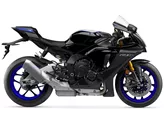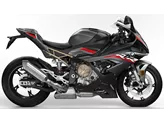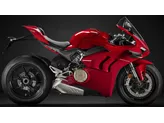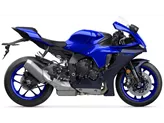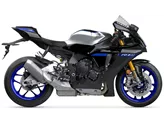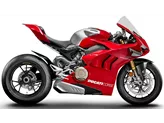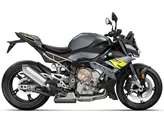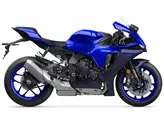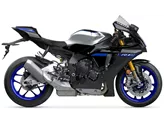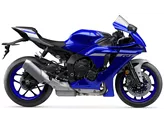Yamaha R1 2015 vs. BMW S 1000 RR 2016

Yamaha R1 2015

BMW S 1000 RR 2016
Overview - Yamaha R1 2015 vs BMW S 1000 RR 2016
The Yamaha R1 model year 2015 and the BMW S 1000 RR model year 2016 are both high-performance supersport motorcycles that offer exceptional power and performance. While they share many similarities in terms of engine specifications and design, there are also some notable differences between the two.
In terms of engine specifications, the Yamaha R1 2015 is equipped with a 998cc engine that produces 200 horsepower and 112.4 Nm of torque. On the other hand, the BMW S 1000 RR 2016 has a slightly larger 999cc engine that generates 199 horsepower and 113 Nm of torque. Both bikes have a compression ratio of 13 and feature four cylinders.
When it comes to suspension, the Yamaha R1 2015 is equipped with an Upside-Down telescopic fork front suspension, while the BMW S 1000 RR 2016 features a telescopic fork front suspension. Both bikes have an aluminum frame, with the Yamaha R1 2015 featuring a Deltabox frame and the BMW S 1000 RR 2016 featuring a Twin Tube frame.

Yamaha R1 2015
In terms of braking, both bikes are equipped with double disk front brakes. They also have the same tire dimensions, with a front tire width of 120mm and a rear tire width of 190mm. The Yamaha R1 2015 has a front tire diameter of 17 inches, while the BMW S 1000 RR 2016 has a slightly larger front tire diameter of 17 inches. Both bikes have a wheelbase of over 1400mm.
When it comes to weight, the Yamaha R1 2015 has a kerb weight of 199kg (with ABS), while the BMW S 1000 RR 2016 is slightly heavier with a kerb weight of 204kg (with ABS). Both bikes have a fuel tank capacity of around 17 liters, with the BMW S 1000 RR 2016 having a slightly larger capacity of 17.5 liters.

BMW S 1000 RR 2016
In terms of strengths, the Yamaha R1 2015 is known for its crazy sound, rev-happy engine with a strong peak, and a great racing feeling in the saddle. It also boasts a superior electronics package and high-quality workmanship. On the other hand, the BMW S 1000 RR 2016 is praised for its very powerful engine, comfortable seating position, and excellent shift assistant.
However, both bikes also have their weaknesses. The Yamaha R1 2015 has been criticized for its torque sag in the middle and stability issues in the braking zone. On the other hand, the BMW S 1000 RR 2016 has been noted to be somewhat sluggish in curves.
In conclusion, both the Yamaha R1 2015 and the BMW S 1000 RR 2016 are exceptional supersport motorcycles that offer impressive power and performance. While they have similar engine specifications and design features, there are some differences in terms of suspension, weight, and strengths. Ultimately, the choice between the two will depend on individual preferences and priorities.
Technical Specifications Yamaha R1 2015 compared to BMW S 1000 RR 2016
Pros and Cons in comparison
Pros and Cons in comparison
Yamaha R1 2015

The new R1 is a big hit and no longer compares to the previous model. This was considered a good country road bike and heavy investments had to be made for excursions to the race track. Now it is the other way round. The new R1 has been developed with a clear focus on the race track. The electronics package seems outstanding, technology freaks will get their money's worth. Yamaha fans have to buy it, they finally have a worthy motorbike. The R1 has slight weaknesses when braking - it becomes a little unstable here. If you want to buy a ready-made racing bike without having to work on the chassis, you'd better go for the R1M. The Öhlins electronic suspension works perfectly and has no weaknesses. For pure racetrack use, the second weakness of the R1 can easily be ironed out. The torque hole in the middle can be easily ironed out with a new mapping.
BMW S 1000 RR 2016

The S 1000 RR is the universal talent among the superbikes - you sit on it and feel comfortable straight away. Although it seems a bit nervous in comparison in terms of chassis and stability. However, it converts this into pleasantly easy handling and impresses with its enormous engine power. The front wheel is indeed particularly light and has to be calmed by the steering damper. An incredibly sporty and at the same time comfortable feature is the shift assistant for upshifting and downshifting - this brings calm to the chassis and you can fully concentrate on driving.
Price Comparison Avarage Market Price Yamaha R1 vs BMW S 1000 RR
There are a few key differences between a Yamaha R1 2015 and a BMW S 1000 RR 2016. It takes less time to sell a BMW S 1000 RR with 69 days compared to 76 days for the Yamaha R1. Since model year 2005 1000PS.de editors have written 80 reviews for the Yamaha R1 and 135 reviews for the BMW S 1000 RR since model year 2010. The first review for the Yamaha R1 was published on 28/04/2003 and now has more than 3,900 views. This compares to more than 4,000 views for the first review on BMW S 1000 RR published on 16/04/2008.



